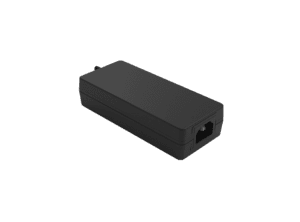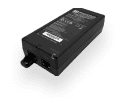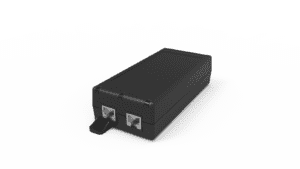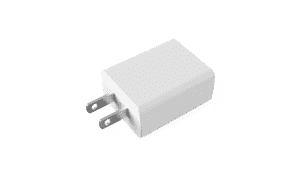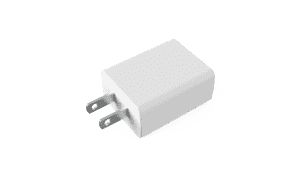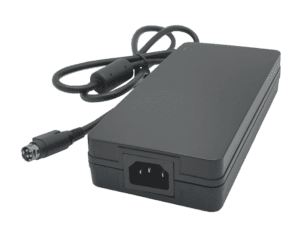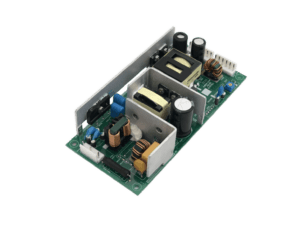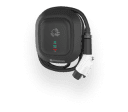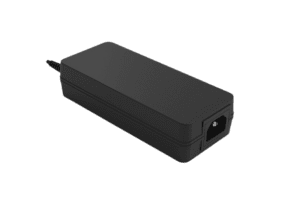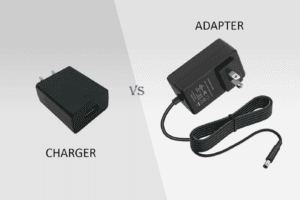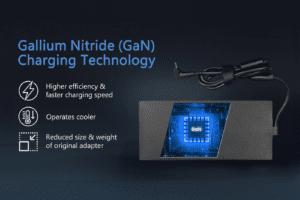BLOG
What Is the Role of Edge AI in Autonomous Robot Charging Stations?
Table of contents
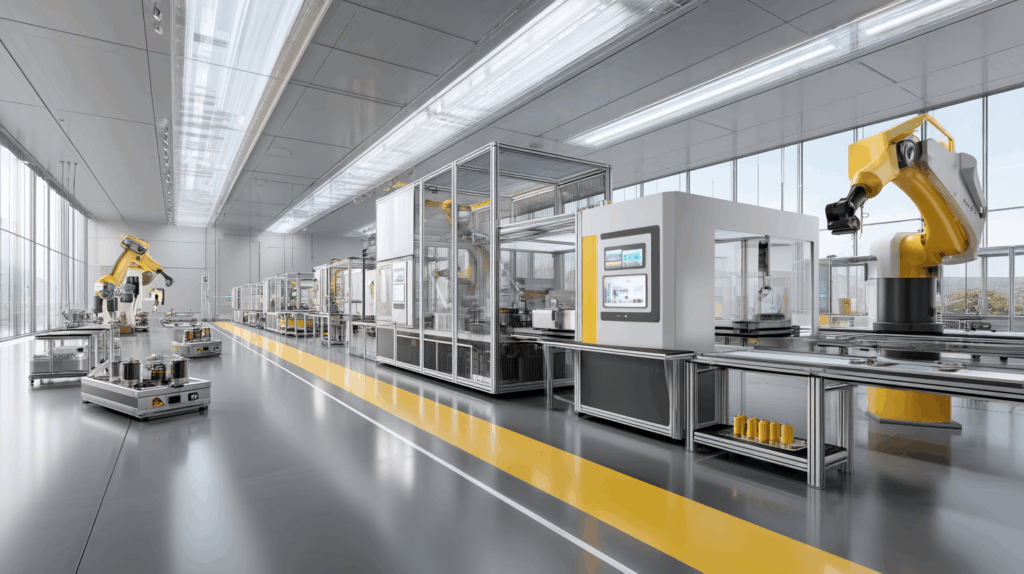
As autonomous robots become more prevalent in warehouses, hospitals, campuses, and city streets, their ability to dock, recharge, and redeploy independently has become a critical part of operational success. But in dynamic environments—where layouts, obstacles, and activity levels constantly change—traditional docking logic can fall short. That’s where Edge AI steps in.
By equipping charging stations and robot systems with localized AI processing, OEMs and integrators are unlocking a new era of smart docking behavior. Edge AI enables real-time decision-making, sensor fusion, and environmental adaptation—allowing robots to dock more accurately, recover from failures, and operate autonomously in unpredictable spaces.
In this article, we explore how Edge AI is redefining docking infrastructure, what capabilities it enables, and how Phihong supports power systems ready for AI-integrated robotic fleets.
Why Dynamic Environments Demand Smarter Docking Systems
In the real world, conditions are rarely static. Whether it’s a pallet that shifted in a warehouse, a pedestrian walking past a sidewalk charging dock, or a cleaning robot contending with a newly mopped floor, environmental unpredictability can disrupt robot charging.
Key Docking Challenges in Dynamic Environments
- Misalignment due to changed floor layout or dock obstruction
- Communication delays in cloud-dependent systems
- Battery failure if the robot cannot redock reliably
- Lack of fallback logic when docking fails or is partially successful
Top Requirements for Smart Docking
- Real-time sensor processing to adjust docking path
- Offline resilience when cloud connectivity is unstable
- Anomaly detection and retry logic for docking errors
- Situational awareness to identify when it’s unsafe to attempt docking
Edge AI addresses all of these with on-site, low-latency, learning-enabled logic.
What Is Edge AI and Why It Matters in Robotic Charging
Edge AI refers to artificial intelligence processing that occurs on or near the device—such as within the robot, dock, or a local controller—rather than in a centralized cloud.
Top Features of Edge AI in Smart Docking
- Embedded inference engines (e.g., NVIDIA Jetson, Intel Movidius, Raspberry Pi AI cores)
- Sensor fusion from LIDAR, cameras, infrared, ultrasonic, and inertial sensors
- Local decision trees, neural networks, or machine learning models
- OTA (over-the-air) update capability for AI behavior refinements
Key Benefits
- Low-latency response to dynamic obstacles or environmental changes
- Autonomous fallback behavior when the cloud is unreachable
- Smarter retry cycles that avoid battery drain or misalignment damage
- Privacy-preserving operation by avoiding unnecessary data uploads
Edge AI transforms the charging dock into a responsive, intelligent endpoint in the robot’s mission lifecycle.
Edge AI-Enabled Docking Capabilities in Real-World Use Cases
Leading OEMs and robotics platforms are already embedding Edge AI into their smart dock architectures—particularly in industries requiring resilience and adaptability.
Use Case Examples
- Warehouse AMRs that replan docking routes due to new pallet positions
- Hospital delivery robots that avoid patient movement or hospital carts
- Campus delivery bots using visual docking cues to align in crowded areas
- Security patrol robots that return to base even during a power outage
Edge-Enabled Capabilities
- Visual docking using QR codes or AprilTags processed locally
- Behavior adjustment based on time of day, lighting, or traffic
- Self-learning from failed docking attempts to improve future cycles
- Charging priority optimization when multiple robots arrive simultaneously
Best Practices
- Use onboard edge processors with GPU acceleration for vision tasks
- Train AI models on real-world failure cases and update them regularly
- Combine AI with traditional navigation (SLAM, GPS) for layered intelligence
- Log docking events and anomalies locally for fleet-wide optimization
With Edge AI, docking becomes adaptive, reliable, and constantly improving.
CLIENT'S QUOTE
"Phihong’s PoE solutions have made a huge difference for us! Our network runs more efficiently, and we’ve seen real cost savings. We couldn’t be happier!"
Key Hardware and Communication Components for AI-Powered Docks
To support Edge AI functionality, charging docks require enhanced hardware and communication infrastructure.
Essential Components
- Microcontrollers or edge processors capable of AI inference
- Sensor arrays (camera, LIDAR, ultrasonic, IMU) for real-time analysis
- CANBus, RS-485, or Ethernet interfaces for robot-BMS coordination
- Enclosures with thermal control and IP ratings for field resilience
Connectivity Features
- Onboard storage for logs and AI datasets
- Wi-Fi, 5G, or Bluetooth for firmware updates and remote tuning
- Secure boot and firmware validation for tamper prevention
- Edge-to-cloud sync only when necessary to conserve bandwidth
Best Practices
- Design docks with swappable AI modules for upgrades
- Integrate AI decision logic with dock power sequencing logic
- Validate real-time behavior with simulated dynamic scenarios
- Ensure electrical isolation between high-power charging and logic modules
A smart dock isn’t just a charger—it’s a microcontroller-powered node in your fleet intelligence stack.
How Edge AI Supports Safer, More Autonomous Charging Operations
Edge AI improves safety not only for robots, but also for their surroundings—especially in public or semi-public deployments.
Top Safety Enhancements
- Object detection to pause or redirect docking if someone is nearby
- Battery condition monitoring to delay charging in unsafe thermal states
- Visual indicators that adapt based on detected environment brightness or noise
- Context-aware charge timing (e.g., avoid charging near food service hours)
Compliance and Reliability Gains
- Easier to pass safety standards with intelligent shutoff capabilities
- Reduces mechanical wear by avoiding repeated failed dock attempts
- Enables UL/IEC-compliant logic separation between AI and power hardware
- Supports smart city infrastructure with real-time charge analytics
Smart docking isn’t just about performance—it’s about trust, safety, and continuous learning.
How Phihong USA Supports Edge AI Integration in Docking Infrastructure
Phihong USA designs modular, intelligent, and AI-ready charging platforms for robotics OEMs and infrastructure partners. Our power solutions support:
- Smart AC-DC and DC-DC modules with programmable charging profiles
- Edge-compatible enclosures with IP67 ratings and thermal protection
- CANBus/UART/RS-485 communication support for BMS and AI integration
- Engineering consultation for thermal design, AI module support, and UL/IEC compliance
- Custom support for docks needing GPU-based local processing and OTA updatability
Phihong helps robotics companies build future-ready, AI-enhanced charging systems that deliver power—and intelligence—where it counts.

Contact Our Team Today!
Our dedicated sales team and international partners are prepared to support you with your latest projects and initiatives globally.
Explore More with Phihong USA
As we conclude our exploration of PoE technology, it’s evident how these innovations are streamlining power and data integration across various industries. Phihong USA stands at the forefront of this technological advancement, offering a diverse range of power solutions designed to meet the evolving needs of modern industries.
Phihong USA’s extensive product lineup includes:
- Power over Ethernet (PoE) Solutions: Delivering reliable power and data transmission over a single cable, ideal for simplifying network installations and reducing costs.
- AC/DC Adapters and Power Supplies: From compact adapters to industrial-grade power supplies, Phihong provides solutions that ensure efficiency and reliability in various applications.
- Battery Chargers: Customizable chargers for lithium-ion and lead-acid batteries, supporting a wide range of power requirements for mobility and industrial applications.
- Medical Power Supplies: Specialized power solutions designed to meet the stringent requirements of the healthcare industry, ensuring safety and reliability.
Phihong USA is committed to innovation and excellence, continually developing products that meet the highest standards of performance and reliability. Their global reach and dedication to customer support make them a trusted partner in powering the future.
Here are some useful links to explore Phihong USA’s offerings further and bring in new potential clients:
Visit Phihong USA to discover how their advanced power solutions can support your business needs. Whether you’re looking to upgrade your network, or find reliable power supplies, Phihong USA has you covered.
By choosing Phihong USA, you’re partnering with a leader in power technology, ensuring your operations run smoothly and efficiently with top-tier power solutions. Contact Us today!
FAQ
What is Edge AI and how is it used in robot charging docks?
Edge AI is local artificial intelligence processing—on the device or near it—rather than in the cloud. In robot charging docks, it’s used to:
- Analyze docking alignment in real time
- Adjust behavior based on environment changes
- Optimize charge scheduling
- Detect and react to obstacles, faults, or anomalies
This allows robots to dock autonomously and intelligently, even in chaotic or unpredictable spaces.
Why is Edge AI better than cloud-only control for robot docking?
Cloud-only control can be delayed or disrupted due to network issues. Edge AI operates locally, enabling:
- Faster reaction times
- Autonomous fallback behavior
- Privacy and security (no constant data transmission)
- Continuous operation in offline or low-bandwidth environments
Edge AI makes smart docking more resilient and responsive.
Can existing charging docks be upgraded to support Edge AI?
In some cases, yes. Modular docks with separate logic layers can be retrofitted with:
- Microcontroller boards or embedded AI processors
- Sensor modules for vision or proximity detection
- Updated firmware to support decision logic and anomaly handling
Phihong supports OEMs with custom upgrades and AI-ready platforms designed to evolve over time.
What sensors are typically used in AI-enabled smart docks?
Common sensors include:
- Cameras (2D/3D, RGB, infrared)
- Ultrasonic or IR distance sensors
- IMUs for vibration/shock monitoring
- Environmental sensors (temperature, humidity, light)
These sensors feed AI models that enable adaptive docking behavior and local decision-making.
How does Phihong help OEMs implement Edge AI in smart docks?
Phihong provides:
- Power systems optimized for AI and logic integration
- Modular dock enclosures that house AI processors and thermal protection
- Design guidance for safety, compliance, and communication protocols
Integration support for Edge AI platforms and OTA firmware management
We help OEMs launch charging systems that are not only powerful, but intelligent, autonomous, and future-proof.

